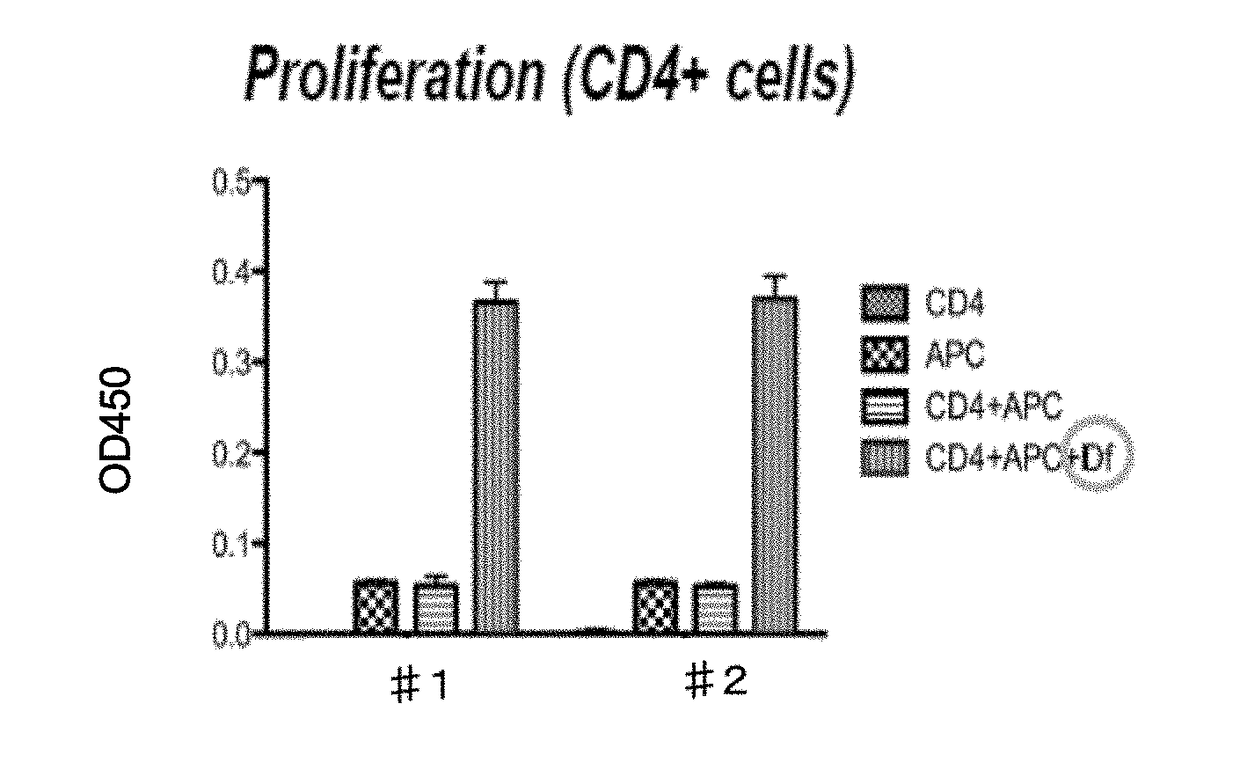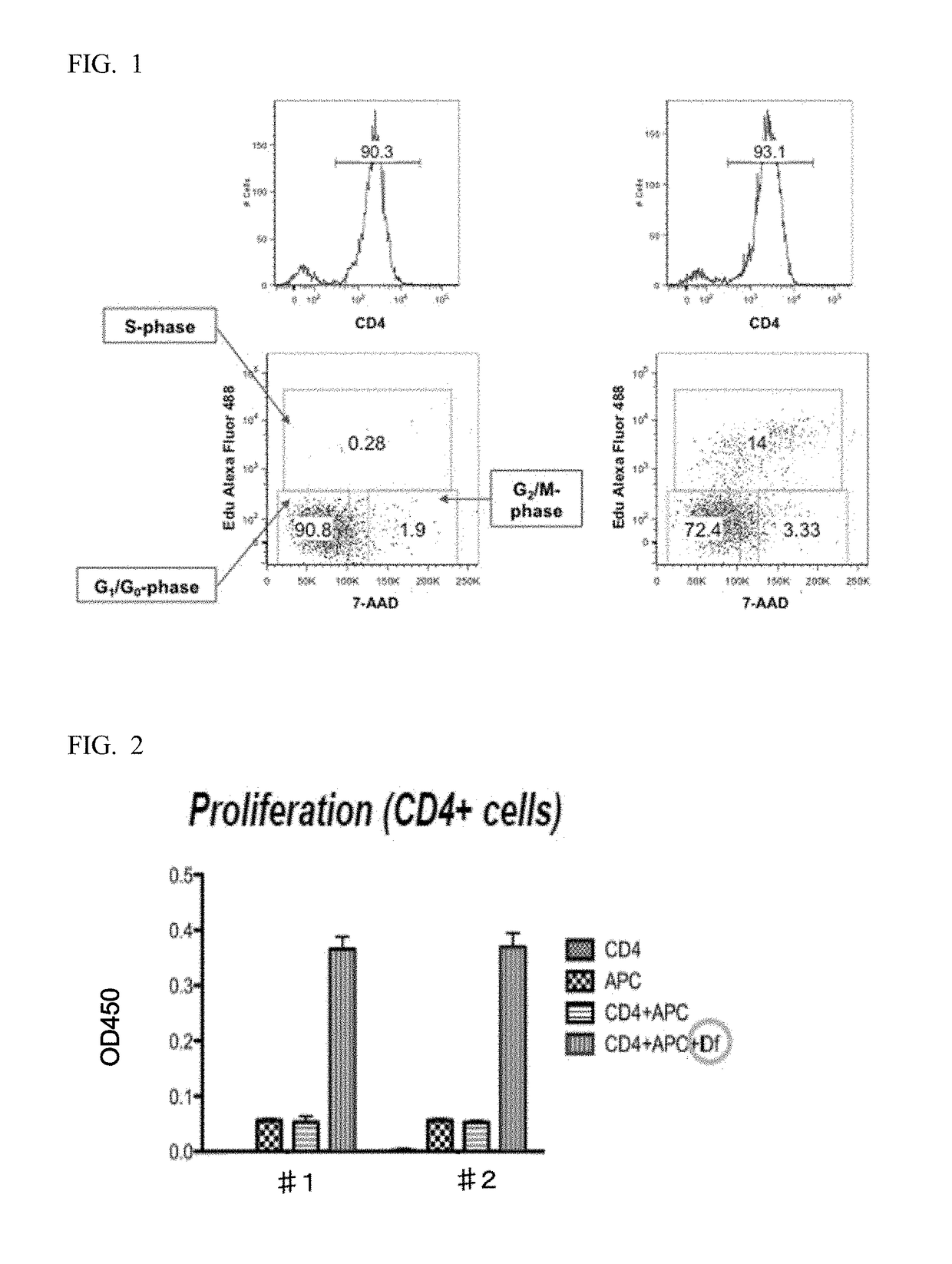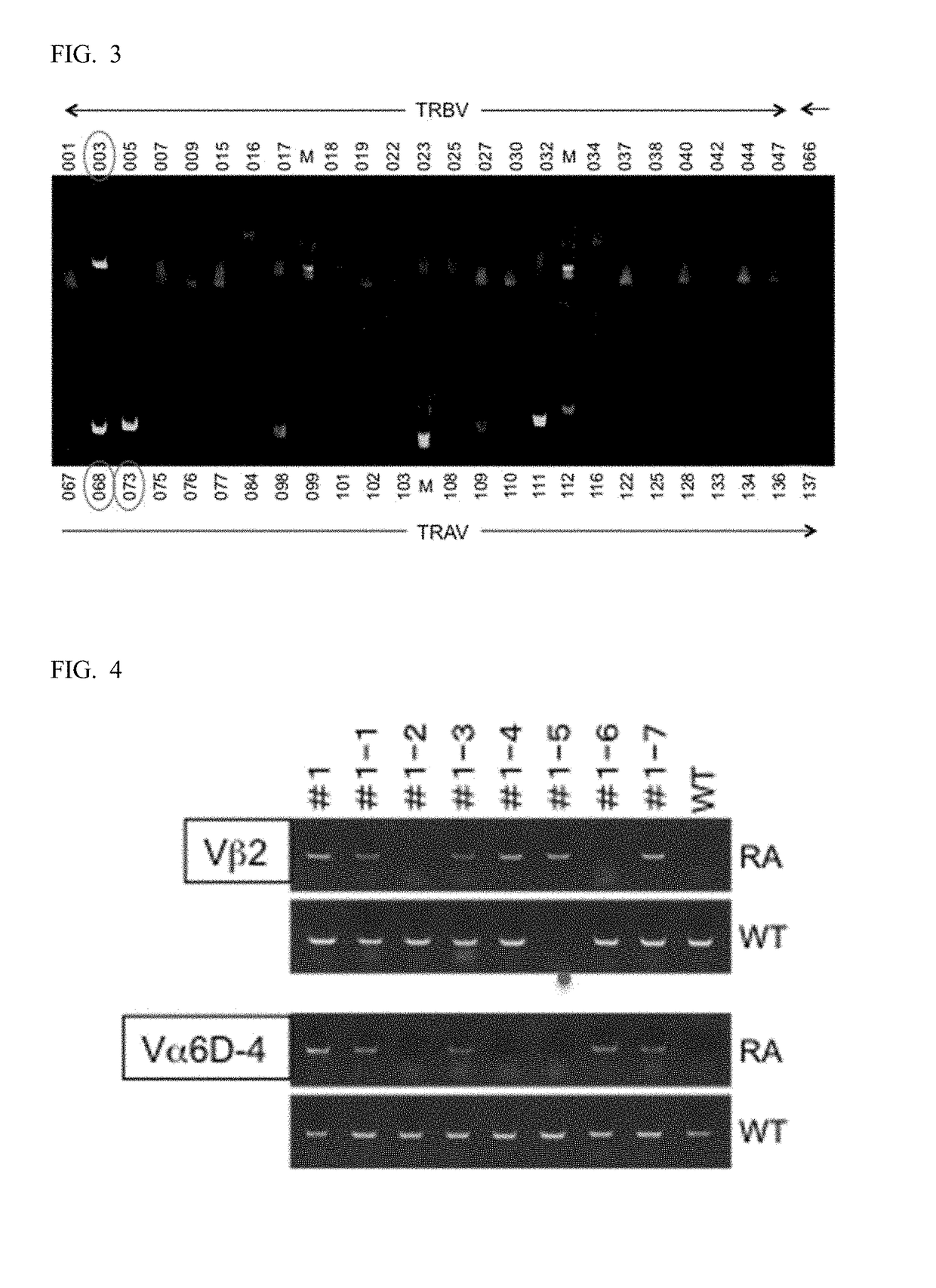Non-human mammal
- Summary
- Abstract
- Description
- Claims
- Application Information
AI Technical Summary
Benefits of technology
Problems solved by technology
Method used
Image
Examples
example 1
Preparation of Antigen-Specific CD4-Positive T Cells
[0076]Mite allergens (Dermatophagoides farinae (Df) and Dermatophagoides pteronyssinus (Dp)) were mixed with aluminum hydroxide (Alum) or Complete Freund's adjuvant (CFA) in a combination of Table 1, and CD2F1 mice (10-week old, male) were injected with the mixture at tail base. The CD2F1 mice were F1 of BALB / c and DBA2.
[0077]One week after the antigen sensitization, inguinal lymph node was excised, and suspended in a culture medium containing fetal bovine sera to prepare the cells. The CD4-positive T cells were concentrated with a magnetic sorting system using CD4 antibody beads, and thereafter the culture of concentrated cells was started together with splenocytes prepared from the identical mice, of which proliferation ability was made deficient by X-ray irradiation, and specific antigens. The cells were cultured without adding IL-2 for 3 to 4 days from the beginning of culture, in order to reduce the proliferation of the antige...
example 2
Generation of Transnuclear Mice
[0079]Transnuclear mice were generated using the CD4-positive T cells obtained according to Example 1 as a nuclear donor cell. The embryos were generated as prescribed in the methods described in Nature 1998; 394:369-74, and Biology of Reproduction 2012; 86:1-6, and as the culture medium of the embryos, a KSOM medium as prescribed in a method described in Lawitts J. A., and Biggers J. D. 1993, Culture of preimplantation embryos, Methods Enzymol. 225:153-164 was used. Concretely, ova obtained by superovulation of mature CD2F1B6D2F1 female were enucleated in the presence of 5 μg / mL cytochalasin B, and the nuclear donor cell was injected thereto with a piezo-drive micromanupilator. After the injection, the cells were cultured under the environmental conditions of 37.5° C. and 6% CO2 for 1 to 2 hours, and thereafter activated with a KSOM medium in the presence of 50 nM trichostatin A, 5 μM Latrunculin A, and 3 mM strontium. Subsequently, the cells were cul...
example 3
Antigen Reactivities 1 in CD4-Positive T Cells of Cloned Mice
[0080]White blood cells or CD4-positive T cells were prepared from peripheral blood of the Df-specific CD4-positive T cell cloned mice established in Example 2, and the cells were cultured together with X-ray irradiated splenocytes of nolinal mice and a specific antigen (Df). On the fourth to fifth day from the beginning of culture, the cell proliferative responses were analyzed using a Cell proliferation reagent (manufactured by Roche Diagnostics). The results are shown in FIG. 2.
[0081]From FIG. 2, the antigen-specific proliferative responses were found in the mice sensitized with the Df antigen. It was clarified from this matter that the cloned mice possessing the antigen specificity of the donor cell could be established as intended.
PUM
 Login to view more
Login to view more Abstract
Description
Claims
Application Information
 Login to view more
Login to view more - R&D Engineer
- R&D Manager
- IP Professional
- Industry Leading Data Capabilities
- Powerful AI technology
- Patent DNA Extraction
Browse by: Latest US Patents, China's latest patents, Technical Efficacy Thesaurus, Application Domain, Technology Topic.
© 2024 PatSnap. All rights reserved.Legal|Privacy policy|Modern Slavery Act Transparency Statement|Sitemap



